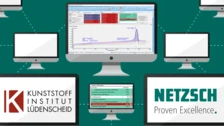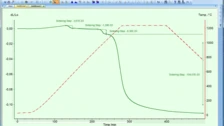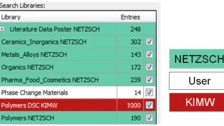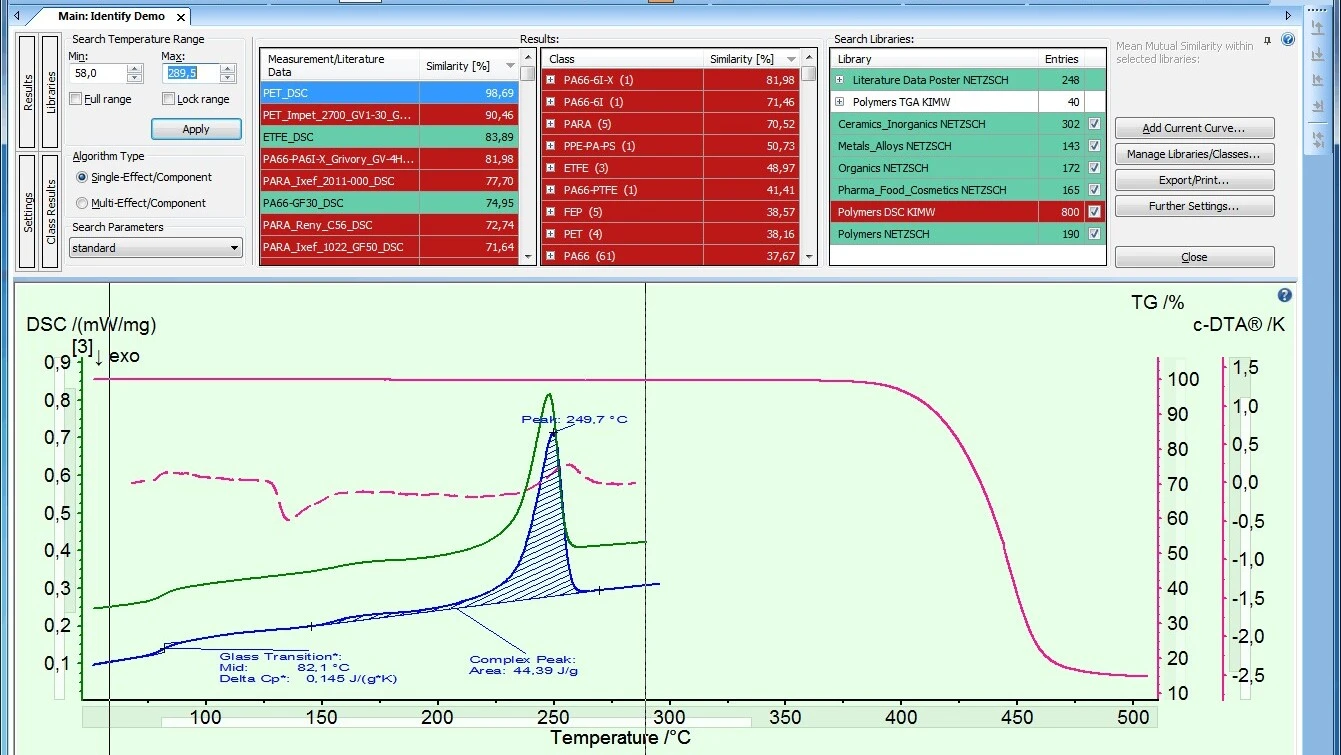
11.09.2018 by Dr. Alexander Schindler
Smart Thermal Analysis (Part II): Identification of Measurements via Database Search
The database system for thermal analysis by NETZSCH, called Identify, has now (from Proteus® analysis version 8.0 or higher) already more than 2000 database entries available.
Furthermore, Identify can now be used with combined TGA+DSC, TGA-c-DTA®® and STA measurements, which allows for material identification with greater certainty.
Identify is a unique database system in thermal analysis for the recognition and comparison of measurement curves of types DSC, TGA, DIL/TMA and Cp. What are the benefits of Identify? A database search using Identify can be very helpful for material identification, failure analysis and quality control (QC). Identify not only makes the interpretation of measurements easier and faster, but also more significant. In addition, this database system is always of value for what is called “data mining”: the archiving, searching and finding of measurements and literature data. All in all, Identify makes thermal analysis smarter!
Database Contents
The Identify database already contains more than 2000 database entries! Shown in figure 1 are the NETZSCH libraries covering various application fields: ceramics, inorganics, metals, alloys, organics, pharma, food, cosmetics and polymers. Available as an option is the KIMW database developed by the Kunststoffinstitut Lüdenscheid, Germany, with DSC curves for 800 different commercially available polymer grades.
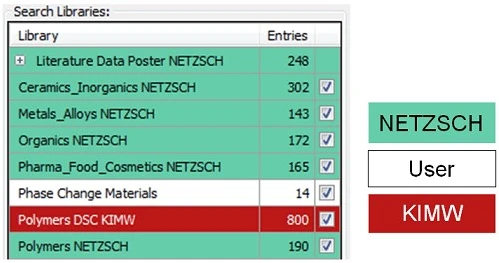
Of course, users can also build up their own libraries and share them with their colleagues on the computer network.
Combined Database Search
The latest development stage for Identify has been a combined database search for independent DSC and TGA signals, for STA (=TGA+DSC simultaneously) and for TGA-c-DTA® signals. Since information about caloric effects – for example, due to Glass Transition TemperatureThe glass transition is one of the most important properties of amorphous and semi-crystalline materials, e.g., inorganic glasses, amorphous metals, polymers, pharmaceuticals and food ingredients, etc., and describes the temperature region where the mechanical properties of the materials change from hard and brittle to more soft, deformable or rubbery.glass transition and melting – and mass changes due to Decomposition reactionA decomposition reaction is a thermally induced reaction of a chemical compound forming solid and/or gaseous products. decomposition is used in combination, it becomes possible to identify materials with a much higher level of certainty. This can be demonstrated by the example shown in figure 2, where the polymer PB (= polybutene) is clearly identified by means of a TGA measurement – particularly due to the combination with its c-DTA®® evaluation. Taking two signals into consideration at once instead of only one signal makes a big difference!
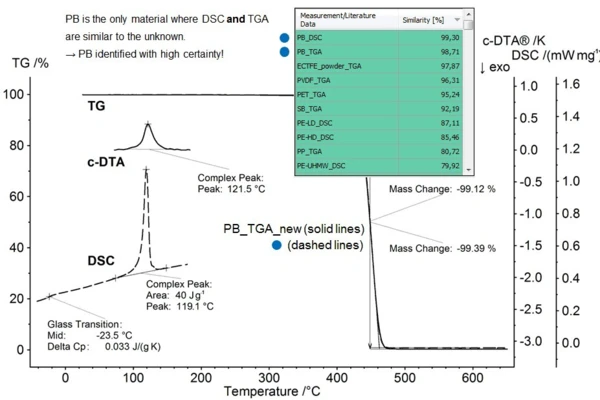
The calculated c-DTA®® curve is like a qualitative DSC signal which, in essence, upgrades the TGA instrument almost into an STA. With regard to the database search, the c-DTA®® signal acts as a link between the TGA and DSC worlds – and Identify is now able to feature this linkage!

In summary, the contents of the Identify database system was expandend to more than 2000 database entries. Furthermore, Identify can now also be used with combined TGA+DSC, TGA-c-DTA®® and STA measurements, which allows for material identification with greater certainty!
More details can be found in this presentation and in the following scientific article published recently:
[1] A. Schindler, M. Doedt, S. Gezgin, J. Menzel, S. Schmölzer. Identification of polymers by means of DSC, TG, STA and computer-assisted database search. Journal of Thermal Analysis and Calorimetry, DOI 10.1007/s10973-017-6208-5, https://link.springer.com/article/10.1007/s10973-017-6208-5
See also Smart Thermal Analysis (Part I): Automatic Evaluation of DSC, TGA and STA Measurements - NETZSCH Analyzing & Testing (including a video about Identify).
